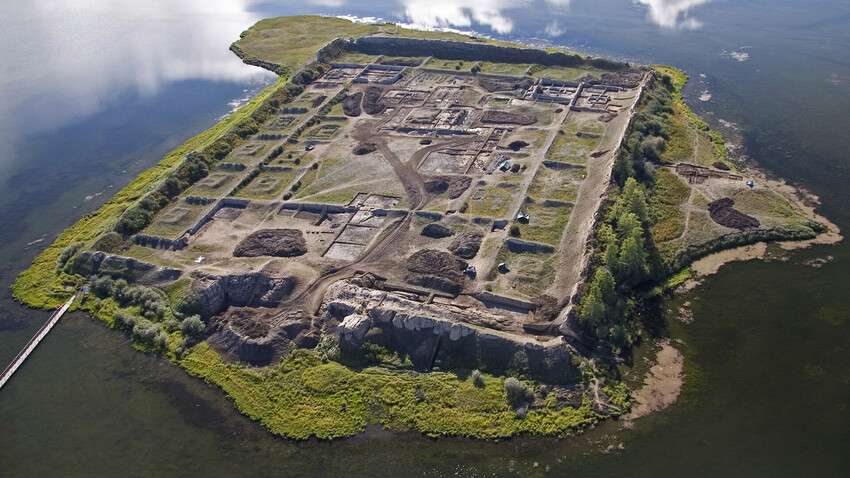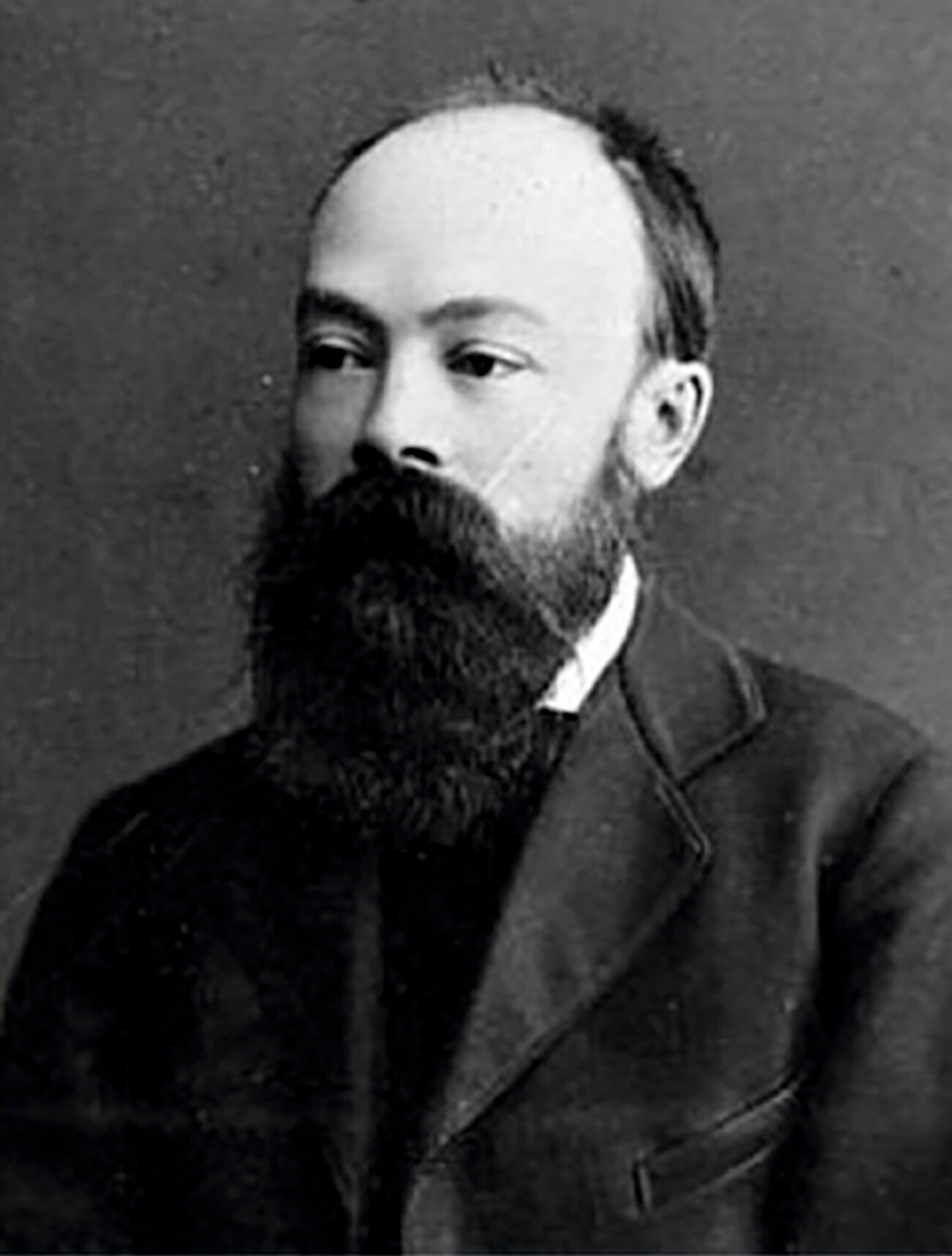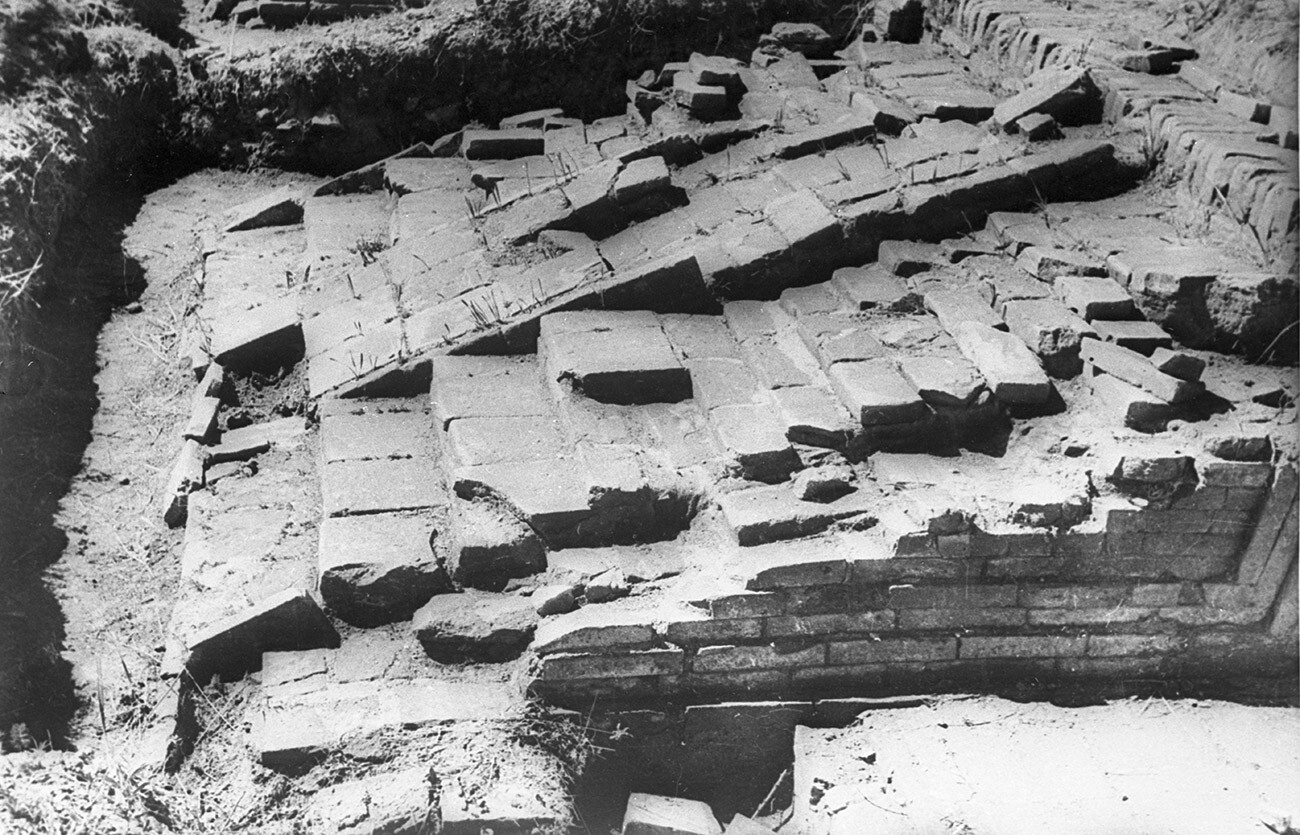
For most people, the story of the fortress of Por-Bazhyn (which means "clay house" in the Tuvan language) began 131 years ago when ethnographer Dmitry Klements discovered an ancient fortress on a picturesque island in Lake Tere-Khol, located in one of the most inaccessible areas of the Republic of Tuva on the border with Mongolia. What he saw was a sensation for many reasons.
The ruins formed a regular and well-defined rectangle with a labyrinth of streets inside. It resembled a Buddhist or Hindu mandala and was very different from anything ever found on the territory of the republic.
The area in front of the eastern wall looked like a square before a palace for holding ritual ceremonies. A magnificent palace complex with columns once stood at the end of the square. Its walls, measuring up to ten meters in height, as well as the foundations and reinforcements of columns, still remain.
The fact that the fortress was very old was never in doubt. At the same time, it looked as if its residents had simply vanished with all their belongings, leaving almost no trace of their daily life. What happened to the inhabitants of Por-Bazhyn? Who built the fortress, so untypical for the area? Who created an artificial lake around it? Maybe it was not a fortress at all? Scientists had plenty of unanswered questions.
The image of a mysterious fortress in the middle of a lake can be often encountered in different variations in the oral folklore of the Tuvan people. The most famous such Tuvan fairy tale is ‘A Khan with Donkey’s Ears’. The locals regard the lake and fortress as sacred, believing that a blue bull named ‘Maender’ lives in the lake: He comes ashore at night and feeds on people’s fear. According to another myth, the grave of Genghis Khan is hidden on the island. And some believed this was the entrance to Shambhala, the mythical Tibetan land, which the Soviet Union once seriously set out to find.

Dmitry Alexandrovich Klements
Public domainOne way or another, the fortress discovered by the ethnographer was an amazing site and, in 1957, an archeological expedition led by Professor Sevyan Vainshtein was dispatched to the island.
“I took part in the excavations from 1957 to 1963. The only way to get there was by a small plane or on horseback. <...> We - three archeologists and 15 site workers - lived on the island in the middle of the lake in tents - working, fishing and fending off midges,” Vainshtein recalls. On the island, behind the fortress walls, they counted 27 dwellings with small courtyards and, digging one of the mounds, they uncovered the remains of a palace. Its roof had been covered with clay tiles and it had been supported by 36 wooden columns. The archeologists also found ornamental frescoes with geometric designs, painted in surprisingly bright, warm colors in red, orange and yellow hues. The traces of a wooden floor survived in places.

“We held in our hands the remains of weapons, vessels, a hoard of bloomery-smelted iron and an anthropomorphic figurine made of clay. There were not many finds, because the palace was destroyed in a fire that occurred more than a thousand years ago. It is not known what happened to the inhabitants of Por-Bazhyn - we found no human remains there. Most likely, they fled,” Vainshtein says.
This expedition in the 1950s-1960s seemed only to raise more questions. For a very long time, researchers of Por-Bazhyn could not understand what sort of structure lay in front of them. There were several theories.
Archaeologist Vainshtein believed that the fortress and palace had been built by Uyghur ruler Bayanchur Khan (khagan of an ancient Turkic state who lived from 713 to 759).
It was also postulated that the fortress had been a sentry post on the Silk Road from China to Europe (a theory that did not tie in very well with the fact that the fortress was located in an isolated spot on an island in the middle of a lake). According to another hypothesis, it had been a base for bandits who robbed traders and this was allegedly the source of legends that there were treasures hidden in subterranean vaults at the fortress.

But the monastery theory looked to be the most plausible one. The history of Buddhism has close connections with Central Asia, a region across which lay a route for contacts between India, the birthplace of Buddhism, and China, where Buddhism was popular in the Early Middle Ages. “And what I saw on the photographs of Por-Bazhyn is very similar to the lay-out of the Buddhist monasteries that evolved in Central Asia, probably in the 7th-8th centuries AD, and was very widely disseminated,” Tigran Mkrtychev, deputy director-general for scientific work at the State Museum of Oriental Art, conjectured in 2007.
At the same time, Mkrtychev did not rule out the possibility that it was a monastery belonging to another ancient Oriental religion - Manichaeism. This religion, which has its origins in Mesopotamia in the 3rd century, penetrated into the Uyghur Khaganate for a period of several centuries. “And whereas Buddhist monasteries are quite familiar to us, the Manichaean monasteries (manistans) are much less studied,” Mkrtychev noted.
The “secrets” of the fortress of Por-Bazhyn were probed again in 2007-2008, when a fresh expedition was sent to the island and extensive excavations were carried out. Archeologists uncovered an interesting fact: After construction, the fortress failed to be put to any use. This explained why the so-called “cultural layer” inside the fortress proved to be so meager. But there were still no clues as to what Por-Bazhyn actually was when it was built and why the fortress had been abandoned.
Then, scientific methods came to the rescue: radiocarbon analysis and the ‘Miyake event’. In 2012, ‘Nature’ journal published an article written by Japanese scientists who had dated the rings of a 1,800-year-old cedar and discovered a surge of radiocarbon in the atmosphere in the year 775. This surge was attributed to an exceptional solar flare, reflected at cellular level. The phenomenon has come to be known as the ‘Miyake event’ (after the name of the article’s lead author) and has come to be used for dating purposes at archeological digs.
This is exactly what Russian experts decided to do, too. In 2018, they applied to one of the principal world laboratories dealing with radiocarbon analysis located at the University of Groningen in the Netherlands.
“We sent three sawn samples of larch from the walls of Por-Bazhyn to Groningen. One of them, with reliably surviving bark, was selected for study and, there, in the third ring from the bark, the ‘Miyake event’ was discovered. And a study at cellular level of the youngest ring allowed the Groningen dendrochronologists to conclude that the tree was cut down in summer. This made it possible to determine not just the year, but also the season when construction began - the summer of 777,” according to Andrey Panin, deputy director of the Institute of Geography of the Russian Academy of Sciences.
According to the archeologists’ calculations, construction lasted two summer seasons. This was a period when the ruler conducted an extremely problematic religious reform - the adoption of Manichaeism. And, in 779, there was an anti-Manichaean coup in the khaganate and the ruler was killed and his reforms reversed. And these facts allowed everything to fall into place.
“On the basis of the whole package of available data, it was hypothesized that the function of the complex was not defensive, as had previously been believed, but was related to religious worship: It had been a Manichaean monastery. If the monastery had been built just prior to the coup, then the previous rulers had simply not had time to use it, while the new ones simply did not need it. And that would explain the chief mystery of Por-Bazhyn - the absence of signs of use,” Andrey Panin says.
If using any of Russia Beyond's content, partly or in full, always provide an active hyperlink to the original material.
Subscribe
to our newsletter!
Get the week's best stories straight to your inbox